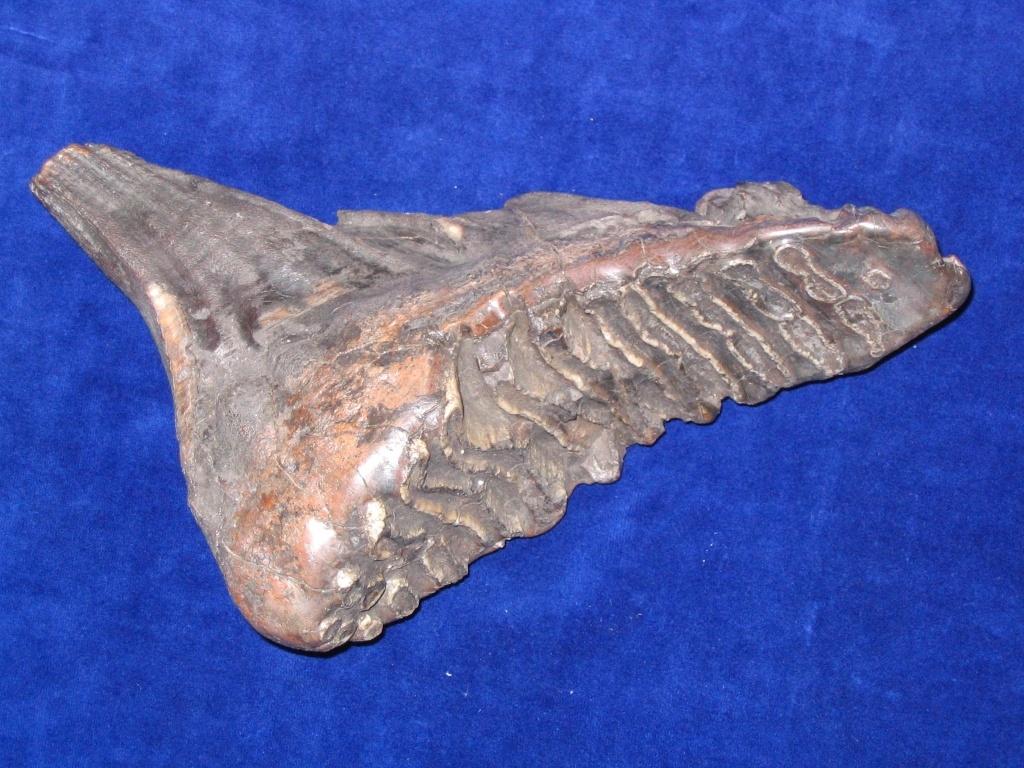Der Steppenelefant ist der charakteristische Elefant Mitteleuropas während der Steppenzeit zu Beginn der Elster-Eiszeit. Er lebte vor 750.00 - 250.000 Jahren in Asien, Europa und Nordamerika. Aus ihm entwickelte sich das Wollhaarmammut (Mammuthus primigenius). Der Steppenelefant stammt vom Südelefanten (M. meridionalis) ab.
Anhand der Backenzähne lassen sich Formschwankungen innerhalb der Art feststellen. Manche Zähne sind meridionalis-artig, andere weisen schon auf M.primigenius hin. Auch Anklänge an Elephas antiquus kommen vor. Dieser Backenzahn ist groß und tief ausgekaut, stammt also von einem alten Tier.
Alter: ca. 350.000 Jahre
en

